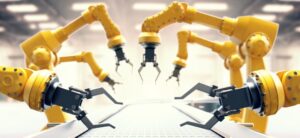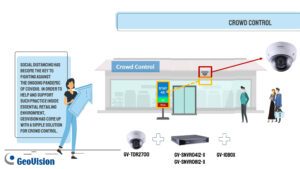
Automation has been making steady inroads into the security sector over the past several years. As more and more solutions become integrated and digital technology overtook their management, automating processes became simpler and more efficient. Using the power of advanced algorithms that make up analytics, automation has a vital role to play in the time of COVID.
When you factor in COVID-19 into this equation, the automation works similarly. In some cases, analytics can help identify when an employee isn’t wearing protective equipment, such as goggles or a hard hat. Equipping the analytics to identify when an employee isn’t engaging in safe social distancing procedures or not wearing a mask can also help identify breaches in a protocol that may potentially shut down operations altogether.
The safety of employees is ultimately what these facilities are focused on as it relates to using this kind of technology, so expanding on the tools already in place is becoming more and more popular as we navigate our response to the COVID-19 threat.
Automate to safety
Many vendors are thinking out of the box to meet the unique requirements that the current situation demands.
Several large manufacturers currently use and deploy automation robotics in their facilities, and from the feedback we are gathering, they are extremely efficient and help eliminate unnecessary human interaction.
Improving productivity with automation
Discussion on automation takes us slightly out of the main topic of this article, which is security in the manufacturing sector. However, the role of security devices in improving operational efficiency cannot be ignored.
Cameras integrated with SCADA and automation systems are used to improve productivity on the factory floor, allowing operators to oversee ongoing processes and activities remotely from the control room. This ranges from monitoring on- or offloading of products or material on the loading bays to visual inspection of parts of the production line. Intelligent thermal cameras can also be used to detect overheating equipment that could malfunction and interrupt processes, as well as become a safety issue for the workers.
In addition, the processes can be recorded for compliance purposes, so that specific batches can be traced in case a problem arises. At a time when economic recovery is as important as COVID-19 control, manufacturers could use all the resources available to improve productivity and boost operations.
In the automation side of things, once a PoE IO BOX sets an event logic schedule, it can operate independently without a server, and can also be integrated remotely through the network. The common applications for this include detecting the unauthorized presence of people in specific areas.
For example, if the AI-enabled system detects that there is a person below a crane as it is being operated, it will automatically stop and issue a warning or turn off the power of the device through remote control, reducing the need for manpower and increasing the safety measures.

Closing thoughts
There are two key takeaways here. As factories reopen, they will be forced to work with fewer employees. They will also need to follow health care guidelines like social distancing and frequent hand washing. Automation is the answer to both these issues. While automating factory operations would help the production, automating security would help manufacturers ensure every safety measure is being followed.
Adapted from a&s Magazine



































































